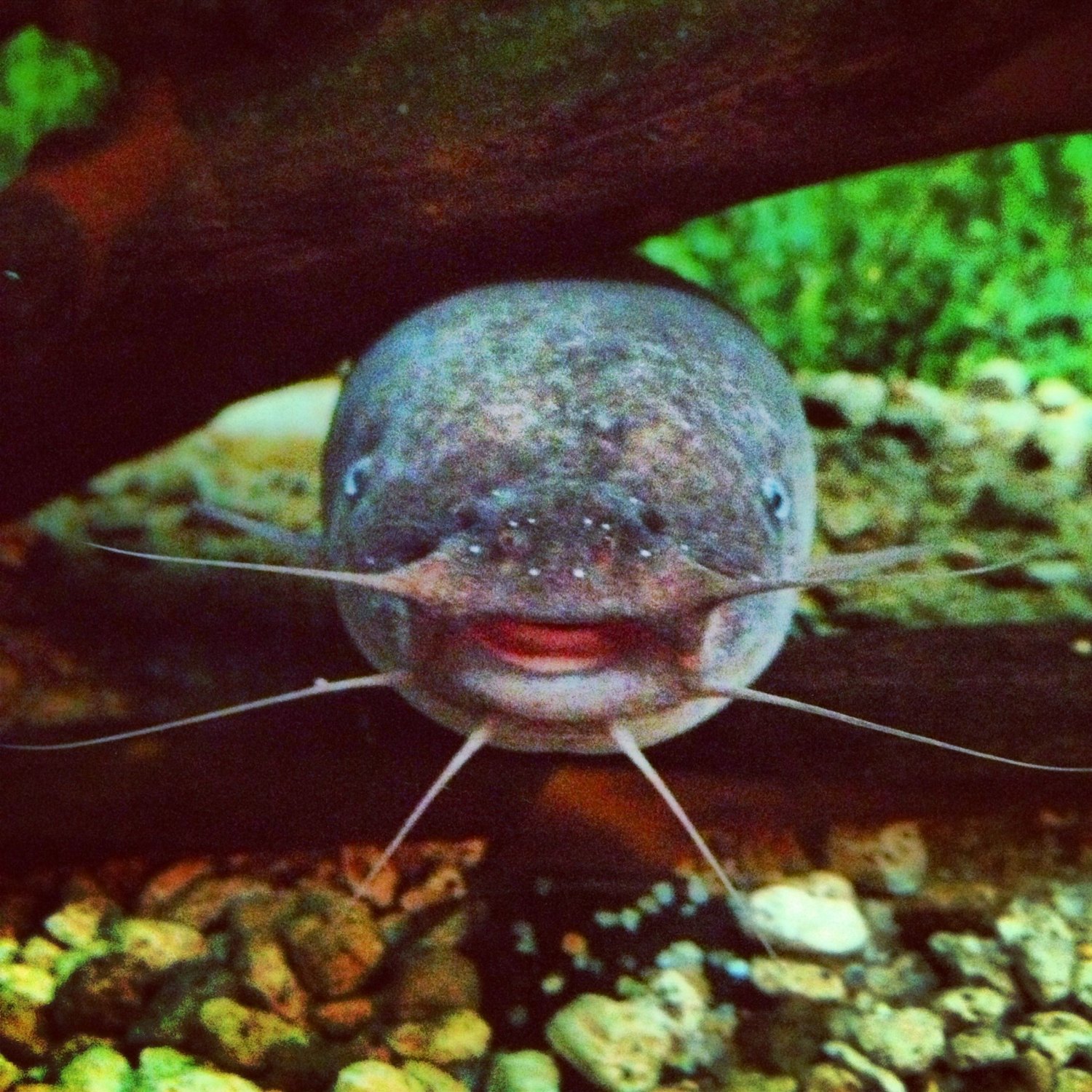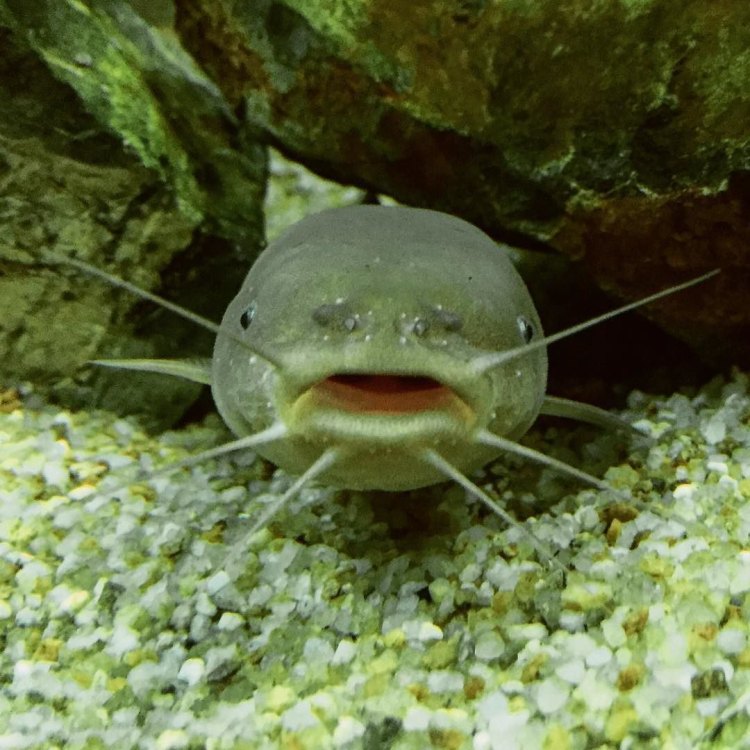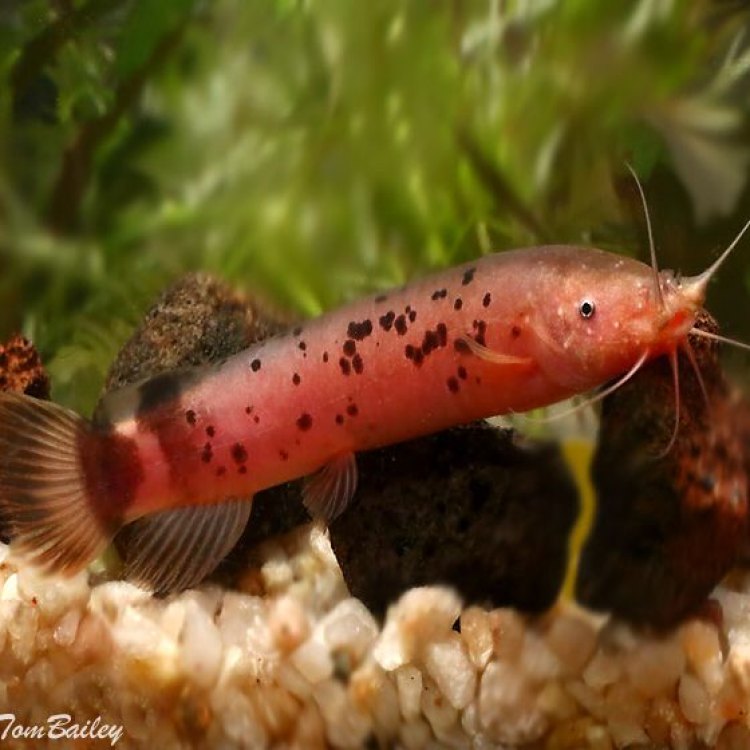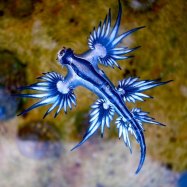
Electric Catfish
Up to 1.2 meters (4 feet)
Meet the electric catfish, an electrifying creature found in lakes and rivers. This unique fish can grow up to 1.2 meters long and belongs to the Malapteruridae family. Its body shape is elongated and cylindrical, making it a powerful swimmer. Don't let its name fool you, this catfish doesn't have fur but can produce an electric shock. Stay curious and explore the diverse world of animals!
Animal Details Summary:
Common Name: Electric Catfish
Kingdom: Animalia
Habitat: Freshwater
Unleashing the Shocking Secrets of the Electric Catfish
Deep within the freshwater lakes and rivers of Africa, lives a creature that has mastered the art of electricity - the Electric Catfish. Scientifically known as Malapterurus electricus, this intriguing animal possesses a unique ability that sets it apart from other fish species.But what exactly is an Electric Catfish? For those new to the realm of this remarkable creature, let's dive deep into the world of the Electric Catfish and uncover its electrifying secrets.
A Magnificent Fish with a Powerful Name
The Electric Catfish, with its awe-inspiring scientific name, belongs to the animal kingdom known as Animalia Electric Catfish. It falls under the phylum Chordata, class Actinopterygii, order Siluriformes, and family Malapteruridae. This may seem like a mouthful, but it simply means that the Electric Catfish is a member of the chordate family, which includes all vertebrates with a spinal cord.But the name that truly captures its essence is the Malapterurus electricus, which translates to "bad-fin electric". This name alludes to its unique ability to produce electric shocks, making it one of nature's most intriguing and fascinating creatures.
A Habitat Like No Other
As mentioned before, the Electric Catfish calls the freshwater lakes and rivers of Africa its home. With its diverse range of habitats, the Electric Catfish can be found in various countries across the continent, making it a truly versatile species.Its natural habitat is in lakes and rivers with sandy or muddy bottoms, making it easier for the catfish to hide and ambush its prey. You can also find them in shallow waters with plenty of vegetation, which provides shelter and a breeding ground for their offspring.
A Shocking Feeding Method
While most fish rely on their sense of sight to locate their prey, the Electric Catfish has evolved to use a different, more electrifying tactic Emperor Angelfish. It uses its electric organ, known as the "electroplaques", to locate its prey and stun them with an electric shock before devouring them.This ability is especially useful at night when the electric catfish may have trouble seeing its prey in the dark waters. Without any need for light, the Electric Catfish can hunt and feed with ease, making it a truly unique predator in the aquatic world.
The Dazzling Colors and Shape
The Electric Catfish has a distinct appearance that sets it apart from other fish species. The body of the Electric Catfish is elongated and cylindrical, with a flattened head and a long, whip-like tail.The catfish has a mottled pattern of grey or brown on its body, which helps it blend into its surroundings. This natural camouflage is crucial for its survival, as it can easily hide from predators and sneak up on its prey.
An Impressive Size and Spooky Behavior
The Electric Catfish is a relatively large fish, growing up to 1.2 meters or four feet in length. Its size is not the only impressive thing about this fish. It also has an uncanny ability to move both on land and in water, making it a truly versatile creature.To move on land, the Electric Catfish uses its pectoral fins to crawl or glide over damp surfaces, similar to an eel. This behavior is called "voluntary electric shock" and is a defense mechanism that allows the catfish to escape predators.
The Power of Electricity
One of the most intriguing features of the Electric Catfish is its ability to produce electric shocks. Its electric organ, which runs along the underside of its body, is made up of specialized cells called electrocytes. These cells can generate electric pulses of up to 350 volts, which is used for various purposes such as hunting, communication, and self-defense.When hunting, the Electric Catfish releases low-voltage pulses towards its prey, similar to a radar system, to locate the prey's exact location. Then, it produces a much more powerful shock to stun and immobilize its prey before devouring it. This capability makes the Electric Catfish a force to be reckoned with in the aquatic world.
The Human-Electric Catfish Connection
The Electric Catfish has been a part of human history for centuries, and its ability to generate electricity has always been a source of fascination and curiosity for scientists and researchers.In ancient times, the Egyptians used the Electric Catfish for medicinal purposes. The fish was believed to have healing properties and was used to treat epilepsy, arthritis, and migraines.
Currently, the Electric Catfish is used as a model for studying the electric organ's development and function, which has helped scientists understand other organisms' electric capabilities.
The Last Shock - Conservation and Protection
Despite its unique abilities, the Electric Catfish faces various threats that put its survival at risk. Its natural habitat is being destroyed due to human activities such as deforestation, mining, and pollution, causing a decline in its population.Furthermore, due to its popularity as an aquarium fish, it is often caught and sold in large numbers, leading to overexploitation. Some countries also use the catfish for medicinal purposes, which adds to its already dwindling numbers.
To protect the Electric Catfish, various conservation efforts have been initiated in different African countries. These include creating protected areas, monitoring population numbers, and enforcing regulations on the fish's capture and trade.
A Fish Like No Other
In conclusion, the Electric Catfish is a unique and intriguing creature that deserves our admiration and protection. Its ability to generate electricity has fascinated humans for centuries, and its importance in scientific research cannot be overstated.As we continue to expand our understanding of the world and its inhabitants, it is crucial to conserve and protect species like the Electric Catfish, who have so much to offer to the scientific community and our natural world.
So, next time you come across an Electric Catfish, remember to appreciate its electrifying capabilities and the remarkable ways in which it has adapted to survive and thrive in its environment.

Electric Catfish
Animal Details Electric Catfish - Scientific Name: Malapterurus electricus
- Category: Animals E
- Scientific Name: Malapterurus electricus
- Common Name: Electric Catfish
- Kingdom: Animalia
- Phylum: Chordata
- Class: Actinopterygii
- Order: Siluriformes
- Family: Malapteruridae
- Habitat: Freshwater
- Feeding Method: Carnivorous
- Geographical Distribution: Africa
- Country of Origin: Various countries in Africa
- Location: Lakes and rivers
- Animal Coloration: Gray or brown, often with a mottled pattern
- Body Shape: Elongated and cylindrical
- Length: Up to 1.2 meters (4 feet)

Electric Catfish
- Adult Size: Up to 1.2 meters (4 feet)
- Average Lifespan: About 10 years
- Reproduction: Sexual
- Reproductive Behavior: They migrate upstream to spawn during the rainy season
- Sound or Call: No specific sound or call
- Migration Pattern: Migrates upstream during the rainy season
- Social Groups: Solitary
- Behavior: Nocturnal and secretive
- Threats: Habitat degradation, overfishing, pollution
- Conservation Status: Not evaluated (IUCN)
- Impact on Ecosystem: Apex predator in its habitat
- Human Use: Popular in the aquarium trade
- Distinctive Features: Electric organs on both sides of the body, used for communication and defense
- Interesting Facts: Can generate electric shocks of up to 350 volts
- Predator: Predators include larger fish and some mammals

Malapterurus electricus
ELECTRIC CATFISH: THE SHOCKING AND UNIQUE APEX PREDATOR OF ITS HABITAT
The underwater world is full of fascinating creatures, each with its own unique adaptations and abilities. One such creature is the Electric Catfish, a species that has been capturing the attention of fish lovers and researchers alike. From its electric-shocking abilities to its solitary and secretive behavior, this fish is a true enigma.Let's dive into the world of the Electric Catfish and uncover the distinct features, behavior, and impact of this peculiar species PeaceOfAnimals.Com.
A Rare and Enigmatic Species
The Electric Catfish, also known as Malapterurus electricus, is a freshwater catfish found in the rivers and lakes of Africa. It is a relatively large fish, with adults reaching sizes of up to 1.2 meters (4 feet). However, what makes this fish truly unique is its ability to produce electric shocks.These electric catfish are solitary creatures and are mainly active at night - making it difficult for researchers to study them in their natural habitat. They are also very secretive and spend most of their time hidden in riverbeds or under logs and rocks. Hence, not much is known about their behavior and life cycle.
But what we do know is that the Electric Catfish is the apex predator in its habitat. It feeds on a variety of prey including fish, insects, and crustaceans, using its electric shocks to stun and immobilize them Elf Owl. This makes them an essential part of the ecosystem, keeping the populations of smaller fishes in check.
The Shocking Abilities of Electric Catfish
As the name suggests, Electric Catfish has electric organs on both sides of its body, running from head to tail. These organs consist of specialized cells called electrocytes, which can generate high-voltage discharges of up to 350 volts!The electric shocks of the Electric Catfish serve multiple purposes. They are used for communication, to navigate in the dark waters, and as a defense mechanism against predators. These shocks can be as mild as a tingle or strong enough to knock down a human.
Despite being an electric fish itself, the Electric Catfish is immune to its own shocks. However, it can still harm other fishes, making it a formidable predator. The electric shocks are also thought to be involved in mate selection and courtship behavior in this species.
The Mysterious Reproductive Behavior
Another intriguing aspect of the Electric Catfish is its reproductive behavior. They are sexual reproducers and migrate upstream during the rainy season to spawn. This behavior has been observed in some other catfish species as well, but the exact reason for this migration is still a mystery.Once the female lays her eggs, the male will guard and fan them with his pectoral fins until they hatch. The fry, or baby fish, are also hatched with their electric organs fully functioning. This is a crucial adaptation, as it helps them defend themselves from predators at a young age.
Interestingly, the Electric Catfish is the only electric fish species known to have internal fertilization. This means that the male fertilizes the female's eggs inside her body before she lays them. This unique feature further adds to the enigma of this species.
Threats and Conservation Status
While the Electric Catfish may seem invincible with its electric shocks, it is facing many threats in its natural habitat. Habitat degradation, overfishing, and pollution are some of the major threats to this species.Like many other freshwater species, the Electric Catfish is also a victim of habitat destruction due to human activities like dam construction and deforestation. Overfishing for food and the aquarium trade is also a significant concern for this species.
Despite these threats, the Electric Catfish has not been evaluated by the International Union for Conservation of Nature (IUCN) for its conservation status. This highlights the lack of knowledge and research on this species and the urgency for its conservation.
Use and Impact on Humans
Apart from being a part of the aquarium trade, the Electric Catfish has not been of much use to humans. However, these creatures have significant cultural and spiritual significance in some African communities. They are considered a delicacy in some parts of the continent, but due to their declining populations, fishing is now banned in many areas.The impact of the Electric Catfish on humans is minimal, except for the occasional electric shocks experienced by fishermen while handling or untangling them from their nets. However, the decline of this species can have significant consequences for the ecosystem and the fishing industry in Africa.
Uncovering the Mysteries of Electric Catfish
The Electric Catfish continues to fascinate researchers and fish enthusiasts worldwide. Its unique features, behaviors, and impact make it a subject of study and interest.However, the secretive nature of this fish poses many challenges for researchers. Only limited information is available about its behavior, life cycle, and reproduction. Hence, there is a need for more research and conservation efforts to understand and protect this enigmatic species.
In conclusion, the Electric Catfish is much more than just a fish with electric shocks. It is a remarkable species that plays a crucial role in its ecosystem. Its distinct features and behaviors make it a true wonder of the underwater world, and it is our responsibility to preserve and appreciate this unique creature.

Unleashing the Shocking Secrets of the Electric Catfish
Disclaimer: The content provided is for informational purposes only. We cannot guarantee the accuracy of the information on this page 100%. All information provided here may change without prior notice.












